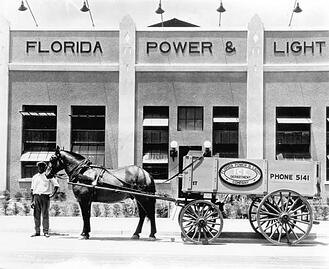7 Things You Should Know About CNC Machine Motors
 Most of us first heard the term “horsepower” when we became interested in motor vehicles. As youngsters, the concept was pretty simple: More horsepower meant faster cars. That was before we learned about the other factors that affect automobile performance such as torque and RPM.
Most of us first heard the term “horsepower” when we became interested in motor vehicles. As youngsters, the concept was pretty simple: More horsepower meant faster cars. That was before we learned about the other factors that affect automobile performance such as torque and RPM.
Electrical motors, including those used to drive CNC machine spindles, are also rated in horsepower and it’s sometimes difficult to evaluate the potential performance of a machine tool without falling into the “it’s all about horsepower” trap. In reality there are a number of factors to consider when evaluating the power, reliability and expected life of a CNC machine tool’s spindle motor. Here are a few:
- Horsepower (HP) can be defined in terms of electrical equivalency (746 watts = one horsepower) or as mechanical power (550 pounds/foot per second). However the raw power of the motor is only part of the story. In order to convert that ability to lift 550 pounds one foot in one second to the turning force necessary to rotate a spindle, you must consider torque. Torque is also expressed in pounds/foot and is equal to the force applied times the radius through which it acts.
- Electric motors carry both continuous and short-term duty ratings. Machining forces, such as applying a cutting tool to a workpiece, put a load on the motor and the greater this cutting force, the more motor output is required to maintain RPM. For example, if a motor is rated 10/15 HP, it can run continuously with a load requiring a 10 HP output. It can also run, for a limited time, up to a maximum 15 HP load. As the motor output increases, so does the motor temperature, which brings us to another important factor: the affects of heat on the motor and the machine tool.
- Many CNC machine motors simply do not perform well as heat increases, and may take a long time to cool down. Some can cool down only when at rest. These motors often run at temperatures above 212° F when in the continuous-duty HP range. Other motors, such as those designed by Okuma for their machines, are designed to run at maximum 212° F in the continuous-duty range, and begin to cool down as soon as the load reduces. This means that even if a portion of a machining cycle requires maximum output, the motor will begin to cool as soon as the demand drops, even as the machine tool continues operating.
- Temperature, of course, not only affects the life of the spindle motor, but other machine components such as ball screws and bearings as well. Plus, thermal expansion can lead to out-of-tolerance parts. So not only is it important for the motor to dissipate heat quickly, but also for the machine tool maker to build in methods for compensating for increased temperatures.
- Many Okuma machine tools are built with the Thermo-Friendly Concept that uses data collected by sensors as the machine is operating, to continuously compensate for temperature changes. We know that thermal deformation affects the spindle both when it is turning and at rest, so the sensors gather and the THINC OSP control system analyzes data on spindle rotation, spindle speed changes and spindle stoppage as well as spindle temperature.
- Horsepower and torque ratings alone don’t provide enough information to make an informed decision about a motor’s potential performance. Unfortunately, some CNC machine builders use off-the-shelf motors that may appear to have adequate HP ratings, based upon power consumption rather than actual output, and may not meet other important criteria. For example, these generic motors may have higher operating temperatures that can impact the bearings, ball screws and other machine components. They may not cool down after short-term operation until they have stopped, idling the machine tool which means lost production time.
- The spindle motor on a CNC machine tool should be designed and built to last the lifetime of the machine, not just for a stated number of hours. If the builder takes a holistic approach to the machine tool design, factors in all of the above considerations, and if routine maintenance is applied, the spindle motor will perform reliably for as long as the machine tool is functional.
Gosiger applications engineers can help you determine which CNC machine tools will provide the performance you require for your specific production demands. Okuma CNC machine motors, as an example, are designed to run cooler and to last the lifetime of the machine. They do not need to stop running to cool down, so they don’t waste valuable production time. The horsepower rating of these motors are defined as mechanical output, not simply power consumption. Okuma motors provide maximum torque at 50 RPM that is critical for low RPM machining. To learn more, contact Gosiger today.